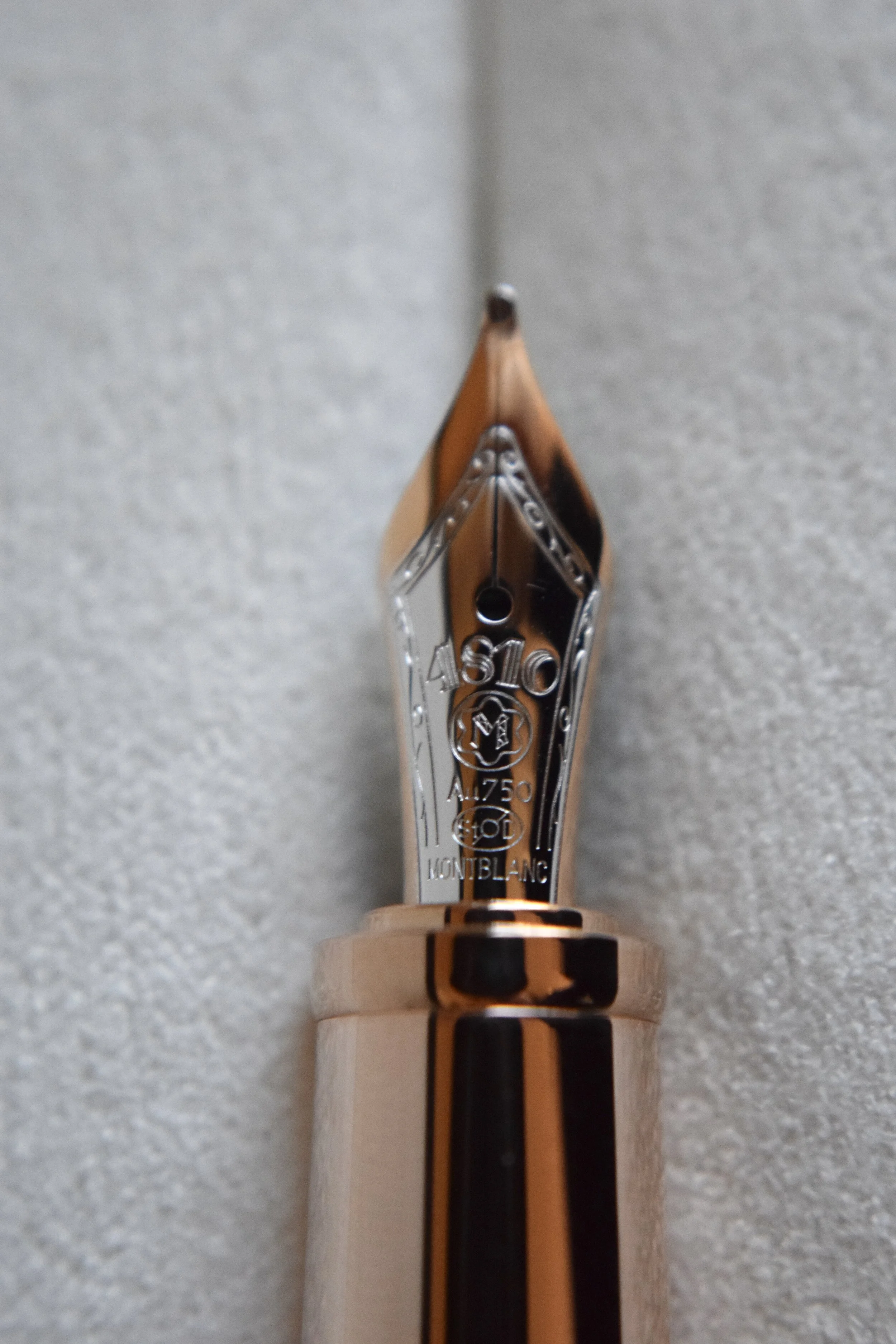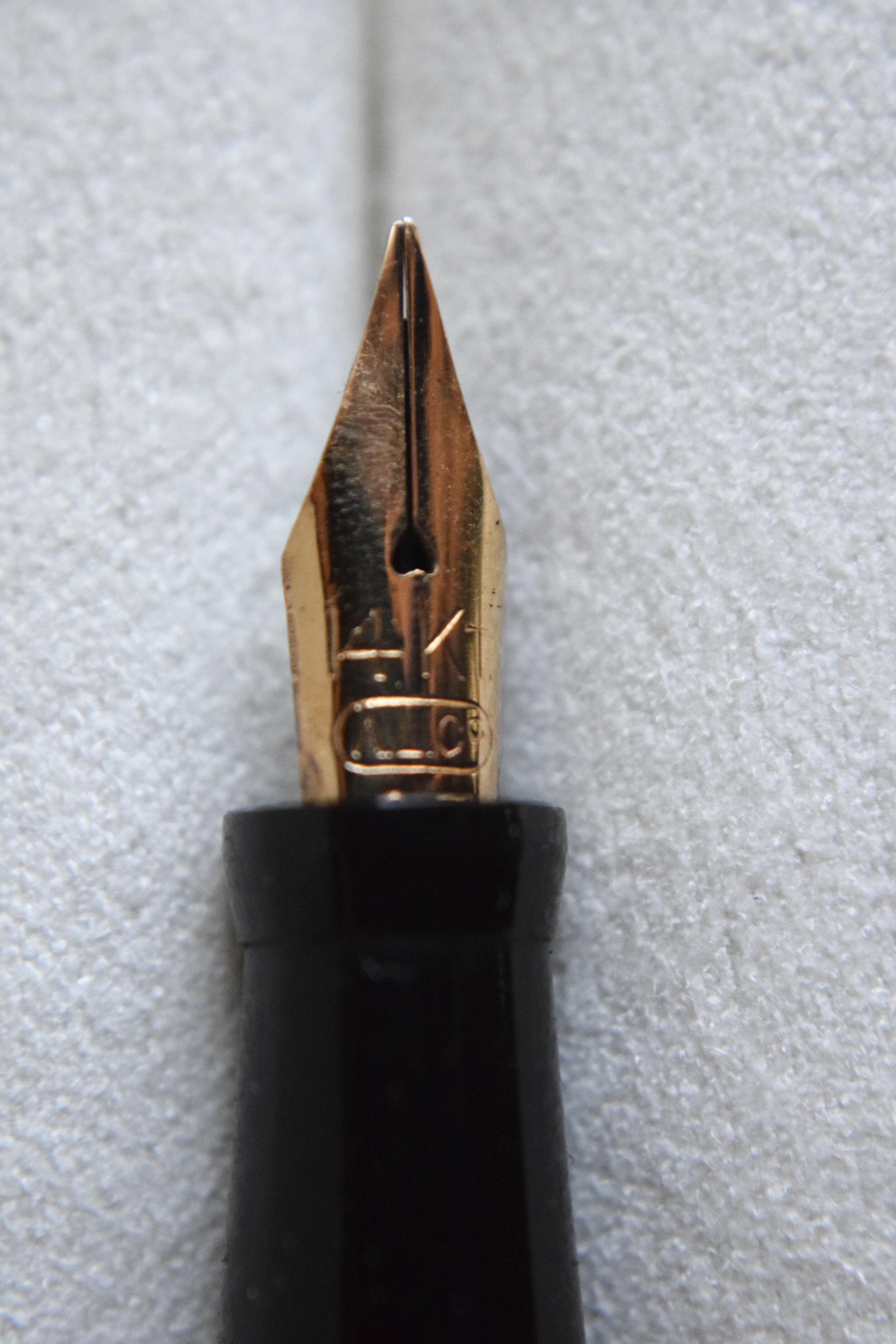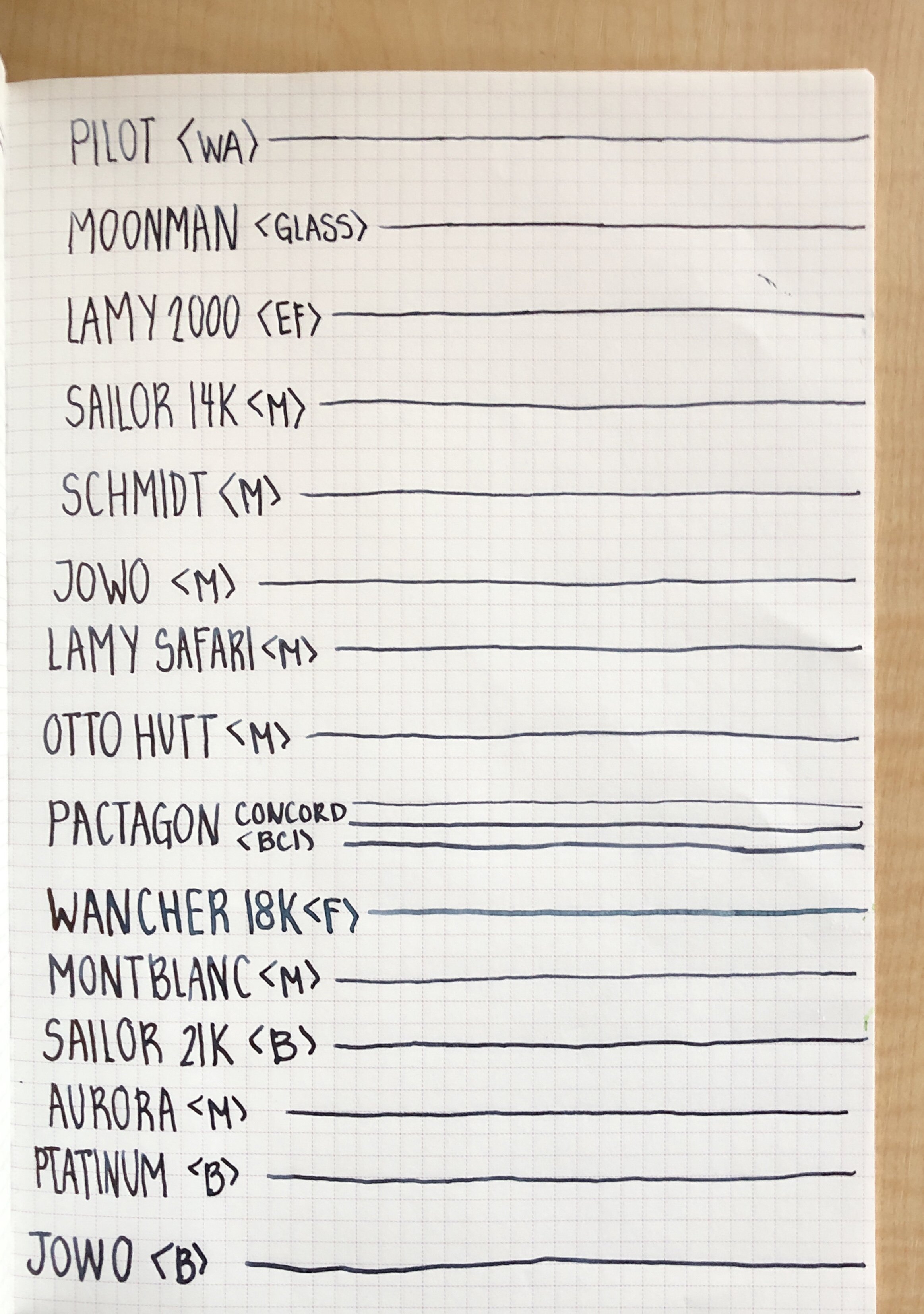What the Width?
Okay, that was my terrible attempt at making a funny title. Today I would like to talk about nib sizes and line widths.
What is a Nib?
You might hear some of us refer to “nibs”. When I was a young fountain-pen enthusiast, I googled my way through everything. A nib is defined as “the part of the pen that contacts the writing surface in order to deposit ink”. In other words, it’s the pointy part of the pen. The nib is one of the integral parts of the fountain pen! You can control the line variation, smoothness, and ink flow merely based on how it touches the paper.
As seen above, nibs can be ornately engraved (or stamped). They can be made of polished steel, plated gold, or solid gold. This brings us to our next point..
Steel vs Gold: What to Expect
The general consensus is that gold nibs are softer than steel nibs. This is similar to the feel between, say, a 2B pencil vs a standard HB pencil.
In my personal experience, this is a subtle difference and honestly up to user preference. I can feel that a gold nib is softer, but it usually doesn’t change my handwriting.
Nib Sizes
Nibs come in several different sizes. The most common are EF (extra-fine), F (fine), M (medium), and B (broad). If you delve into the nib world, you’ll also come across terms such as stubs, italic, flex, and even XXF (extra-fine).
Unfortunately , a one-size-fits-all guide does not exist between manufacturers. What this means is that your Sailor <M> might not lay down the same line as a Pilot <M>, Lamy <M> , and so on.
The general rule when comparing Japanese and Western nibs is that Western pens typically run a size larger than their Japanese counterparts. To put this in simple terms:
Note: this is a generalization and may not apply to individual situations.
Stubs are nibs that are slightly square, but more rounded than italic nibs. These are smooth, wet, and tend to come in sizes like 1.1 mm or 1.5 mm.
Italics are nibs that are crisp and have been ground to produce maximal line variation. This means that your “side stroke” (when you move your pen from left to right in a straight line) is less wide than your “down stroke” (when you move your pen top to bottom in a straight line).
Flex nibs are typically found in older pens. These are nibs that are not rigid and are able to bend to the extreme, producing max line variation.
Waverly nibs have been designed to produce a smooth, consistent line at every writing angle. These are well suited for left hand writers. There is no change in line width as these nibs are quite firm. My 18K Waverly nib lays down a consistent and thin 0.4mm-0.5mm line.
Zoom nibs are engineered to change line widths depending on the angle of the nib to the paper. A high angle produces a thin line, whereas a low angle (close to the paper) produces a thick line.
Music nibs are designed for just that—music. I think of these as stubs, where they produce a thick down-stroke and a thin horizontal line.
Of course, there are many more nib customizations than the basics I’ve discussed above! As my collection expands, I will include my writing samples for the above nib grinds. For now, I’ve included a picture of my pens—and their nib sizes. Hopefully this provides a bit more context for the ink reviews!
Wet or Dry?
You’ll also hear the term “wet writer” or “dry writer”. This simply means that the pen lays down less, or more, ink on the paper. Some inks are quite “wet” and if used in a wetter nib, would pool everywhere. Thus, it would make sense to pair a wet ink with a dry writer (or vice versa).
In the picture above, I would characterize the Wancher 18k as a wet writer. It’s meant to be a <F>, yet lays down a line substantially wider than my Montblanc and Sailor nibs.
Enough reading, who do I talk to? I want cool nibs!
If you want to dip your toes into the water and test out a different nib, I would recommend purchasing a Lamy Safari. The nibs are easily replaceable and less than $15.
That said, there are several established nibsmiths out there. My favorites include Marc Bacas, and Dan (you would have to purchase a pen from him to get a custom grind). I also recommend checking out Franklin-Christoph’s stub italic grinds, or SIG nibs. These are made in-house and provide a smooth cursive italic experience.
As always, I hope this post has provided a bit of insight on line widths and nib sizes. I will continue to update as-needed. Please feel free to reach out with any questions!
Disclaimer: These pens/inks were purchased by me and all opinions/photos are my own. This post was not sponsored.





